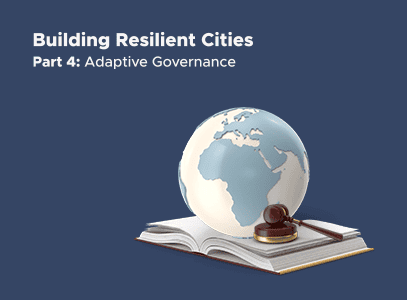A primary purpose of charter cities is to generate sustained economic growth. Cities are the smallest unit where that is possible, hence the focus on the city as the proper unit of reform. Paul Romer wanted a 1000 sq km to build a charter city. Prospera and Ciudad Morazán, two of the ZEDEs (zonas de empleo y desarollo economico), announced in Honduras are .2 sq km. How then, should we think about scale, agglomeration, and economic growth?
Economic growth is not the only rationale for charter cities. A charter city could still be a better place to live and do business for residents without leading to economic growth. Ciudad Morazan, for example, is betting that by offering a safe environment they can attract residents who currently live in violent neighborhoods. That is valuable.
However, given the goals of the charter cities movement, if the end result is industrial and business parks that have a residential element, even if they include meaningful quality of life improvements, the movement should be considered a failure. Charter cities need to retain their focus on being transformative, which includes combining governance reform with agglomeration.
The benefits of governance scale exponentially with population. A single house with legal autonomy won’t be valuable, except perhaps as a tax haven. A city block similarly won’t be valuable. Ten city blocks is a small district, and depending on the target industry, could start to see some benefits from legal autonomy. One hundred city blocks, particularly in a dense city, could see even more benefits. Governance requires a network within which people and businesses operate. The denser that network, the more benefits from improving governance.
I am not aware of any academic studies on the relationship between agglomeration and governance and would be disinclined to trust any that did exist. The relationship is not so easily quantified and depends on the broader economic context within which the town or city exists.
Ancient Athens, for example, one of the most successful cities in history is estimated to have had a peak population of around 300,000 residents, a comparable number to a 3rd tier American city today. Renaissance era Florence is estimated to have a population of around 60,000. Birmingham, one of the key cities in the Industrial Revolution, had a population of 24,000 in 1750.
As the economy has grown more complex, cities have expanded to take into account the increased importance of agglomeration. It’s hard to imagine a tier 1 city with a population of 300,000 or less. Nevertheless, population isn’t the only consideration. San Francisco, for example, has a population of 800,000 (though the bay area has about 7 million residents total) and is one of the most important cities today.
The benefits of agglomeration depend on existing within a broader framework of both supply chains and ideas. Athens wouldn’t have been Athens without Classic Greek culture and city states. Florence grew wealthy because of textiles and trade, after which the surplus wealth was spent on the renaissance. San Francisco needed the internet to launch the next generation of companies. Context must be considered when thinking about charter cities.
Success, defined as sustained economic growth, requires an integrated strategy of governance and agglomeration. Honduras, for example, is dominated by agriculture and manufacturing. Improved agricultural productivity is insufficient for economic development. Therefore, sustained economic growth requires a sufficiently dense agglomeration of manufacturing to lead to productivity increases in the worker population and to move up the supply chain. My guess is that this requires a city of ~150,000 residents that is tightly integrated with San Pedro Sula, the industrial capital of Honduras. Such a city could have a rate of economic growth that is ~2% higher than the surrounding region.
Luckily, the ZEDE legislation allows for expansion without further government action. ZEDEs can incorporate additional land either with the consent of the landowner, or if a population density threshold is reached, a vote as well as consent of the landowner. This allows ZEDEs to rapidly expand.
As far as I know, Honduras is the only country with a zone program that allows for expansion without additional government action. Typically, the law creating the zone either defines its territorial boundaries or creates a government body that defines the territorial boundaries. Some countries have an application process, but expansion requires going through the application process a second time.
The ZEDE legislation therefore allows for charter cities to start as charter towns and scale up. This allows for more experimentation than otherwise possible. Successful ZEDEs can scale up, while unsuccessful ones will struggle.
One of the key challenges of ZEDE developers and the charter cities space more broadly is figuring out how to scale. The skills for creating a new legal structure are different from building a satellite city of 150,000 residents. Luckily, some developers, e.g., Rendeavour, have figured out the latter. Integrating their knowledge with that of governance can begin to unlock the benefits of agglomeration.







